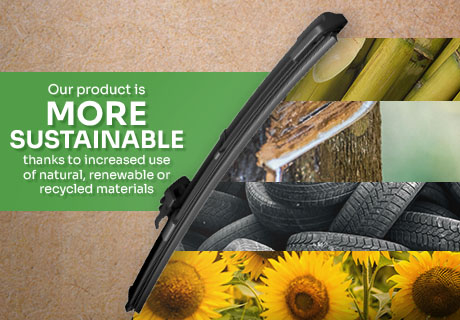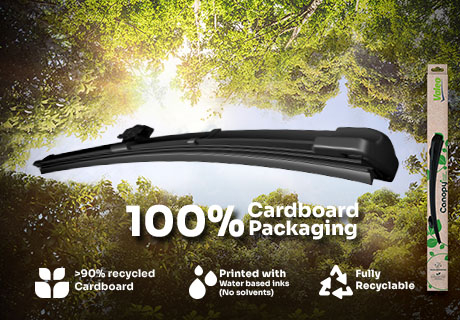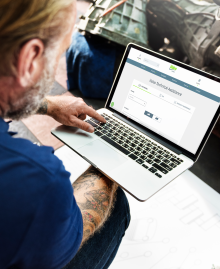

Excellent Wiping Performance over time
A unique combination of rubbers to get the most of each type of material, replacing most of the petroleum-based elements with more sustainable materials.

A More Sustainable Rubber Compound
Over 80% natural, renewable, or recycled materials:
- Natural rubber from hevea trees
- Synthetic rubber made from sugar cane and vegetable oils
- Carbon black from recycled tyres

A Wiper Made from Recycled Materials
- Metal splines with up to 15% recycled steel*
- End clips with up to 50% recycled plastic*
Limited Adaptor Waste for Repairers & Consumers
- 1 pre-mounted adaptor on 1 single Flat Blade
- Limited adaptor waste, unlike many other wiper blades
- Easy to fit: acclaimed by repairers

100% Cardboard Packaging
- >90% recycled cardboard
- Printed with water-based inks (solvent-free)
- Fully Recyclable
Made in France
- Manufactured and packaged in Valeo’s Original Equipment wiper plants in France
- It limits the environmental impact of transportation
- It allows faster reactivity to peak demand







